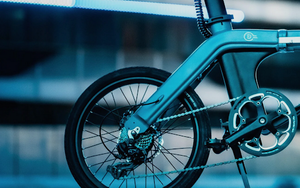How Do Electric Mountain Bikes Work?
Oct 30, 2024
Over the past few years, the popularity of electric mountain bikes (eMTBs) has skyrocketed. These innovative bicycles provide an extra boost of power that allows riders to conquer challenging terrains and enjoy longer rides without feeling exhausted. But have you ever wondered how electric mountain bikes actually work? In this article, we will explore the fascinating world of eMTBs, diving into their components, the science behind their operation, the benefits they offer, and how to choose the right one for you.
Understanding the Basics of Electric Mountain Bikes
Before we delve into the intricacies of how electric mountain bikes work, let's first understand their basic components. An eMTB consists of several key elements that work together to create a seamless riding experience.
Components of an Electric Mountain Bike
An electric mountain bike is similar to a traditional mountain bike but with a few added components. It features a frame, handlebars, pedals, and wheels, just like a regular bicycle. However, there are a few additional components unique to eMTBs:
- Battery: The battery is the power source for the electric motor. It is usually mounted on the frame, providing a reliable and rechargeable energy supply. Modern eMTBs use lithium batteries, which offer a higher energy density and longer lifespan.
- Electric Motor: The electric motor is the heart of an eMTB. It provides assistance to the rider by multiplying the pedaling power. The motor can be located in different positions, such as the front wheel hub or at the cranks near the pedals.
- Controller: The controller acts as the brain of the electric mountain bike, regulating the power output from the battery to the motor. Riders can control various settings, such as power levels and pedal assist modes, through a display or control unit.
- Sensors: Electric mountain bikes are equipped with sensors that detect the rider's pedaling force and speed. These sensors provide feedback to the controller, which adjusts the motor assistance accordingly.
The Role of the Electric Motor
Now that we understand the basic components of electric mountain bikes, let's explore the role of the electric motor. The motor in an electric mountain bike is designed to provide assistance to the rider, rather than replace pedaling entirely. This is known as pedal-assist or pedelec technology.
When you start pedaling, the sensors detect your pedaling force and activate the motor. The motor then kicks in and provides additional power, helping you overcome challenging terrains or maintain higher speeds with less effort. The level of assistance can usually be adjusted, allowing riders to choose between different power levels or modes.

The Science Behind Electric Mountain Bikes
At the core of every electric mountain bike lies a combination of advanced technologies that work together to deliver an exhilarating ride. Let's explore two key components - lithium batteries and pedal assist - that contribute to the remarkable performance of electric mountain bikes.
The Role of Lithium Batteries
Lithium batteries are the primary energy source for electric mountain bikes. These batteries are known for their high energy density, allowing them to store more power in a compact and lightweight package. Compared to older technologies like lead-acid batteries, lithium batteries offer significant advantages in terms of capacity, lifespan, and weight.
When fully charged, a lithium battery can provide enough energy to support a long ride on an electric mountain bike. The range, or the distance a rider can travel on a single charge, depends on various factors such as terrain, rider weight, and the level of assistance provided by the motor.
How Pedal Assist Works
Pedal assist is a key feature that sets electric mountain bikes apart from other electric vehicles. Unlike throttle-based systems found in electric scooters or motorcycles, electric mountain bikes use pedal-assist technology, which requires the rider to pedal in order to activate the motor.
When you start pedaling, the sensors on the electric mountain bike detect your pedaling force and instantly provide assistance from the electric motor. The level of assistance typically depends on the power mode or level selected. This way, you can enjoy the feeling of riding a traditional bicycle while having the extra power to conquer challenging terrains or tackle longer distances.

Benefits of Electric Mountain Bikes
Electric mountain bikes offer a range of benefits that have contributed to their growing popularity among outdoor enthusiasts. Let's explore some of these advantages:
Increased Speed and Efficiency
One of the main benefits of electric mountain bikes is the ability to ride faster and cover more ground with less effort. The assistance provided by the electric motor allows riders to maintain higher speeds and tackle uphill sections more easily. This increased speed and efficiency enable riders to explore more trails or enjoy longer rides, unlocking new possibilities for outdoor adventures. Research shows that electric mountain bike riders are riding further, faster and more frequently throughout the year compared to other cyclists and mental health was cited as the biggest benefit of riding electric mountain bikes by 30% of study participants.
Environmental Impact
Electric mountain bikes have a lower environmental impact compared to traditional gasoline-powered vehicles. By choosing an electric mountain bike, riders reduce their carbon footprint and contribute to a cleaner and greener future. Additionally, the electric motor produces minimal noise pollution, allowing riders to enjoy the peacefulness of the natural surroundings without disturbing wildlife or fellow outdoor enthusiasts.

Maintenance and Care for Electric Mountain Bikes
To ensure the longevity and optimal performance of your electric mountain bike, it is essential to follow proper maintenance and care practices. Here are a few tips to keep your electric mountain bike in top shape:
Battery Care and Replacement
Proper care of the battery is crucial for the longevity and performance of your electric mountain bike. Always follow the manufacturer's instructions for charging and storing the battery. Avoid leaving the battery fully discharged for extended periods, as it can lead to capacity loss. If you notice a significant decrease in battery performance or range, it might be time for a battery replacement. Consult the manufacturer or a professional bike shop for guidance.
Regular Maintenance Tips
Regular maintenance is vital to keep your electric mountain bike running smoothly. Here are some basic maintenance tasks you should perform:
- Clean the bike: Regularly clean your eMTB to remove dirt, mud, and debris. This prevents damage to the components and maintains the bike's overall appearance.
- Inspect the tires: Check the tire pressure and tread regularly. Inflation within the recommended range ensures optimal grip and ride comfort.
- Check the brakes: Test the brakes regularly to ensure they are working correctly. Adjust or replace brake pads, if necessary, to maintain optimal stopping power.
- Monitor the drivetrain: Keep an eye on the chain, derailleurs, and gears. Clean and lubricate the drivetrain regularly to prevent wear and ensure smooth shifting.

Choosing the Right Electric Mountain Bike
With so many options available in the market, choosing the right electric mountain bike can be a daunting task. Here are some factors to consider when selecting the perfect electric mountain bike for your needs:
Intended Use
Determine how you plan to use the bike. Are you looking for a bike for leisurely rides on paved trails, or do you intend to tackle rugged off-road terrains? Consider factors such as suspension, tire width, and frame design based on your desired riding style.
The Beamleo Classic is great for comfortable riding or commuting, whereas the Cyrusher Trax is an off-roaders dream.
Motor and Battery
Look for an electric mountain bike with a reliable and efficient motor and battery combination. Consider factors such as maximum power output, range, and battery life. Higher capacity batteries generally offer longer rides and better overall performance.
Frame Material
The frame material affects the weight, strength, and durability of the electric mountain bike. Common materials include aluminum, carbon fiber, and steel. Each material has its own characteristics, so choose one that aligns with your preferences and budget.

Get Riding
Now that you understand how electric mountain bikes work, the science behind their operation, the benefits they offer, and how to choose the right one for you, it's time to hit the trails and immerse yourself in the thrilling world of electric mountain bike riding. Experience the freedom, excitement, and adventure that electric mountain bikes have to offer!
View our range of electric mountain bikes here.






